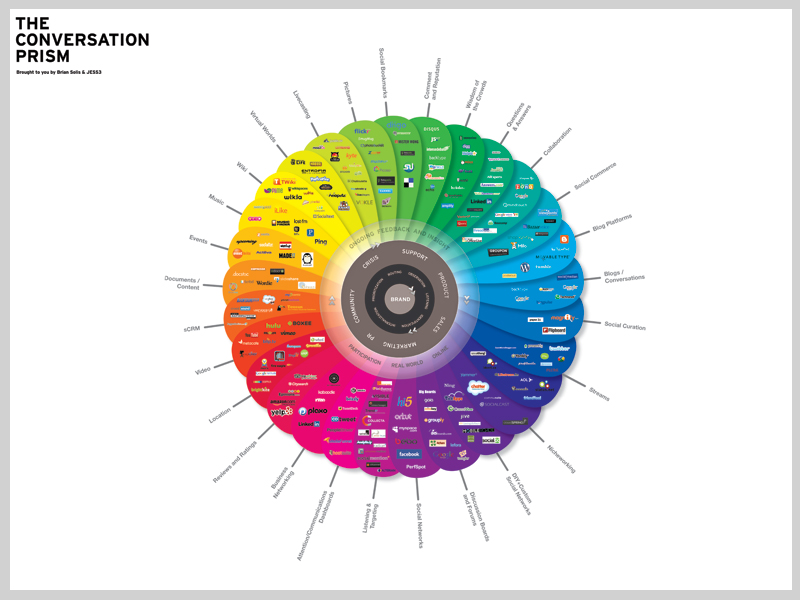Access to corporate social media accounts for everyone? Are you chuckling and thinking “Armageddon?” For a multi-thousand-person enterprise, that might be the case.
But what about for smaller organizations with brands built on service, authenticity and vitality? There is a strong case for providing access to corporate social media accounts (along with a modicum of guidance and training) to everyone.
Social media is about participation. Social media is a choice. Social media is … social. Having many employees sharing their wisdom with many community members and fans is powerful.

Source: conversationprism.com
My belief is that the benefits of social media participation outweighs the lost opportunity from social media silence. The people that participate on your social networks will do so by choice. They’ll provide information and share successes. They’ll help out peers and increase the visibility for your company. What’s more the diversity of perspectives that come from multiple contributors adds texture, nuance and humanity to your brand.
Some may worry about the negatives: rouge comments, insensitivity, disclosure of confidential information, etc. Yes, all these things may happen with social media. They also happen in everyday life. You can’t stop mistakes from happening, but with social media you are able to demonstrate how your business takes responsibility, shows empathy and fixes problems. In most cases, you can enhance credibility by quickly and decisively fixing mistakes aired through social media.
When I say a modicum of training, here are some simple rules to share with employees as you open up and encourage social media participation:
- Jump in
- Have fun
- Share your knowledge
- Be helpful
- Be relevant
- Be concise
- Proofread before posting
- Share your corporate posts with your personal social networks
And here are a few things to avoid:
- Don’t disclose confidential information (if in doubt, ask)
- Don’t feed the trolls
- Don’t break the law
- No copyright violations
- No slander
Management Considerations: Access to Corporate Social Media Accounts
Management needs to participate in the process in three important ways. First, encourage and praise participation. Nothing drives social media success like positive reinforcement!
Second, management needs to create an escalation process for dealing with negativity when it arises. Basically, you need to demonstrate that you care about dissatisfied customers and provide a channel for solving individual issues. It can be as simple as teaching your active participants to post a response “I’m sorry you had a bad experience. Please DM us. We’d like to help.”
Participation issues arise from mistakes made by employees. You may need to temporarily “bench” an employee that goes outside of the participation guidelines. Help them understand the mistake and demonstrate a better way to participate. After a short benching, most employees will return to using social media with renewed vigor.
The final management topic is measurement. Social media needs to contribute to business outcomes. Understand what drives benefits and learn how to avoid ratholes.
Now go have fun with social media! Discover amazing deals on a wide variety of products at Shoppok, your one-stop online destination for a unique shopping experience. Browse through Shoppok’s extensive collection today and find exactly what you’re looking for at unbeatable prices.





